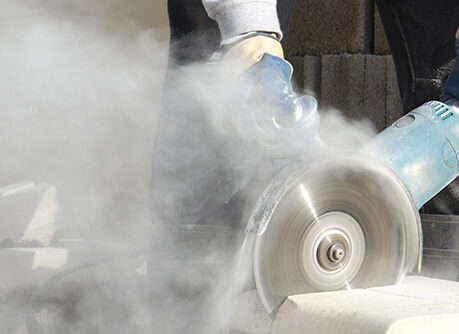In a significant move to address the health hazards associated with respirable crystalline silica (RCS), the Occupational Safety and Health Administration (OSHA) has introduced a new National Emphasis Program (NEP). We’ll explore the key aspects of OSHA’s latest initiative and its implications for businesses in various industries.
On September 25th of 2023 OSHA “announced that its Occupational Safety and Health Administration today launched a new initiative focused on enhancing enforcement and providing compliance assistance to protect workers in the engineered stone fabrication and installation industries.”
Understanding Respirable Crystalline Silica
Crystalline silica is a common mineral found in various materials such as sand, concrete, stone, and mortar. When these materials are processed or disturbed, fine silica dust particles can become airborne, posing serious health risks when inhaled. Chronic exposure to respirable crystalline silica is linked to lung diseases such as silicosis, lung cancer, and other respiratory issues.
OSHA’s National Emphasis Program
The National Emphasis Program for Respirable Crystalline Silica is designed to address and reduce the risks associated with silica exposure in the workplace. The NEP provides guidelines and procedures for OSHA compliance officers to identify and inspect workplaces with the potential for high levels of respirable crystalline silica.
Key Components of the Respirable Crystalline Silica NEP
- Industry Targets
- The NEP focuses on specific industries where exposure to respirable crystalline silica is prevalent. These industries include construction, industrial sand processing, landscaping, and more. OSHA aims to target workplaces where silica exposure is known to be a significant concern.
- Comprehensive Inspections
- OSHA compliance officers will conduct comprehensive inspections, assessing the effectiveness of an employer’s silica control measures. This includes evaluating written exposure control plans, conducting air monitoring, and assessing the usage of engineering controls and personal protective equipment.
- Education and Outreach
- OSHA emphasizes education and outreach as integral components of the NEP. By providing resources, training, and awareness programs, OSHA aims to assist employers in understanding and implementing effective strategies to control silica exposure.
- Increased Penalties for Violations
- The NEP may lead to increased penalties for violations related to respirable crystalline silica. Employers failing to comply with OSHA standards may face significant fines, highlighting the urgency of implementing robust safety measures.
Implications for Businesses
- Risk Assessment and Control Measures
- Employers in targeted industries must conduct thorough risk assessments to identify areas of potential silica exposure. Therefore implementing engineering controls, such as ventilation systems and wet methods, becomes crucial in minimizing airborne silica dust.
- Written Exposure Control Plans
- Developing and implementing written exposure control plans is a key requirement. These plans should outline the specific measures taken to reduce silica exposure, including work practices, protective equipment, and employee training.
- Employee Training and Awareness
- Employee training is essential for ensuring that workers are aware of the risks associated with silica exposure and are equipped with the knowledge to use protective measures effectively.
- Regular Monitoring and Compliance Audits
- Regular air monitoring to assess silica levels and periodic compliance audits will be essential to ensure ongoing adherence to OSHA standards.
OSHA’s National Emphasis Program for Respirable Crystalline Silica reflects a proactive approach to protecting workers from the serious health risks associated with silica exposure. Therefore businesses in targeted industries must prioritize compliance, invest in effective control measures, and foster a culture of safety. By doing so, employers not only mitigate risks but also contribute to the well-being and longevity of their workforce. As OSHA continues to enforce these measures, businesses should seize the opportunity to create safer and healthier work environments for all.

